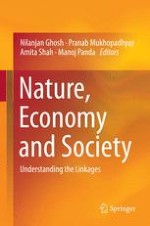2016 | OriginalPaper | Chapter
16. Designing PAT as a Climate Policy in India: Issues Learnt from EU-ETS
Authors : Shyamasree Dasgupta, PhD, Frank van der Salm, Joyashree Roy
Published in: Nature, Economy and Society
Publisher: Springer India
Activate our intelligent search to find suitable subject content or patents.
Select sections of text to find matching patents with Artificial Intelligence. powered by
Select sections of text to find additional relevant content using AI-assisted search. powered by
